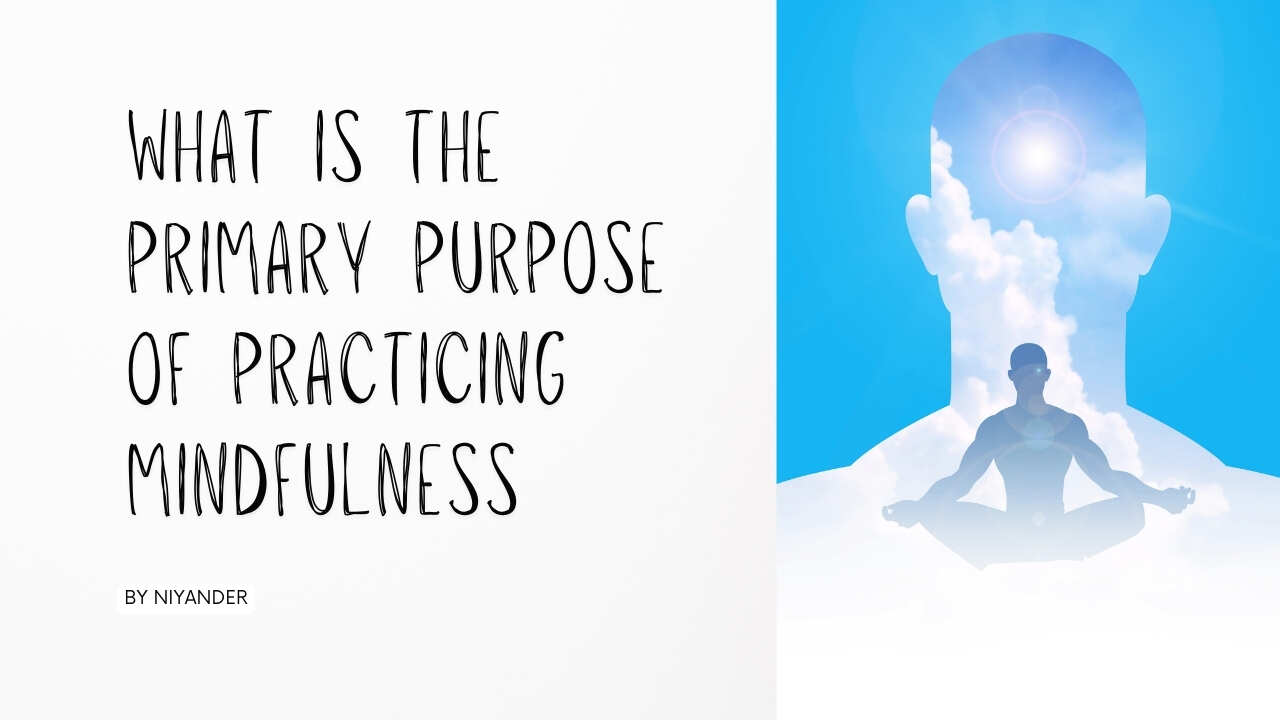What is the primary purpose of practicing mindfulness
What is the primary purpose of practicing mindfulness
In a world brimming with distractions and anxieties, the quest for inner peace and clarity has never been more urgent. This is where mindfulness emerges as a beacon of hope, offering a powerful antidote to the mental cacophony of the modern age. But what exactly is the primary purpose of practicing mindfulness? Let’s delve into the heart of this transformative practice and discover its essence.
What is the primary purpose of practicing mindfulness
At its core, mindfulness is about cultivating present-moment awareness. It’s about training your attention to be fully engaged with the here and now, without judgment or analysis. Imagine yourself sitting by a serene lake, feeling the gentle breeze on your skin, listening to the rustling of leaves, and observing the ripples dancing on the water. That’s a glimpse into the realm of mindfulness.
Instead of dwelling on the past or ruminating about the future, mindfulness anchors you in the present. It allows you to experience your thoughts, emotions, and physical sensations without getting swept away by them. It’s like stepping off a runaway train and taking a conscious breath, observing the scenery instead of being a passenger in a blur.
So, what are the primary benefits of cultivating this present-moment awareness?
- Stress Reduction: Mindfulness has been scientifically proven to reduce stress and anxiety. By focusing on the present, you disconnect from the worries and anxieties that often stem from dwelling on the past or future.
- Improved Focus: Mindfulness enhances your ability to concentrate and filter out distractions. When your mind is less cluttered with mental chatter, you can focus your attention more effectively on the task at hand.
- Greater Self-Awareness: Through mindfulness, you gain a deeper understanding of your thoughts, emotions, and bodily sensations. This self-awareness empowers you to make conscious choices and break free from unhealthy patterns.
- Increased Compassion: Mindfulness cultivates a sense of compassion, both towards yourself and others. By observing your own suffering without judgment, you develop empathy for others who are struggling.
- Enhanced Well-being: Mindfulness has been shown to improve overall well-being, leading to better sleep, a stronger immune system, and a more positive outlook on life.
The Practice of Mindfulness:
The beauty of mindfulness lies in its accessibility. You don’t need any special equipment or training to get started. Here are some simple ways to incorporate mindfulness into your daily life:
- Meditation: Dedicate even just a few minutes each day to sit quietly and focus on your breath. Observe the rise and fall of your chest, without judgment or trying to control your breath.
- Mindful Movement: Practice activities like yoga or tai chi with awareness, focusing on the sensations in your body as you move.
- Mindful Eating: Savor your food, paying attention to the taste, texture, and aroma. Chew slowly and appreciate each bite.
- Mindful Moments: Throughout your day, take short breaks to be present. Take a few deep breaths, step outside and notice the sights and sounds around you, or simply observe your thoughts and emotions without judgment.
Remember, Mindfulness is a journey, not a destination. Be patient with yourself as you learn to cultivate present-moment awareness. There will be times when your mind wanders, but gently bring your attention back to the present. With consistent practice, you’ll discover the transformative power of mindfulness and unlock a path to greater peace, clarity, and well-being.

